Solve Summer Stress: Embrun Garden Recovery How-To
Quick Guide to Garden Recovery
- Identify signs of summer stress: scorched leaves, brown lawn patches, wilted plants.
- Assess your garden systematically: walkabout, lawn check, plant inspection, soil analysis.
- Revive with smart watering (deep, infrequent) and appropriate fall feeding (compost, low-nitrogen fertilizer).
- Tidy up by pruning dead/damaged parts, weeding thoroughly, and monitoring for pests/diseases.
- Prepare for winter: final cleanup, mulching, protecting tender plants, tool maintenance.
Is your Embrun garden feeling the effects of a long, hot summer? Need help getting it back in shape? Request your free quote today!
Introduction: Has Summer Left Your Embrun Garden Feeling Stressed?
Okay, let’s be honest. As the late summer sun starts to dip lower over Embrun, does your garden look less like a lush paradise and more like it just ran a marathon… uphill… in sandals? Remember those scorching days we endured across the Ottawa region, stretching down to neighbouring areas like or Greely? While *we* might have sought refuge indoors, our poor *gardens* often bear the brunt of the summer stress.
Is your once-vibrant *lawn* looking decidedly crispy and brown in patches? Are your favourite flowering *plants* looking a bit weary, perhaps not blooming like they used to? Maybe some unwelcome *pests* or mysterious spots showed up while everything was weakened by the heat or inconsistent watering schedules? You’re definitely not alone! Late-summer *landscaping* fatigue is a common issue for many homeowners around here.
Don’t throw in the trowel just yet! This article is your guide to understanding and addressing post-summer garden woes. We’ll help you identify the key signs of stress in your *lawn* and *plants*, provide practical *gardening* tips and lawn care advice to help them recover, and get your outdoor space prepped and ready for a healthy transition into fall and winter. Let’s give your garden the TLC it deserves! Check out our positive reviews on Google My Business!
Decoding the Damage: What Summer Did to Your Ottawa Garden
Okay, let’s dig into what exactly our wild Ottawa summer might have done to your beloved garden patch. It wasn’t always gentle out there, was it? Between those heatwaves that made us all melt and the occasional surprise downpour, our plants sometimes had a rough go.
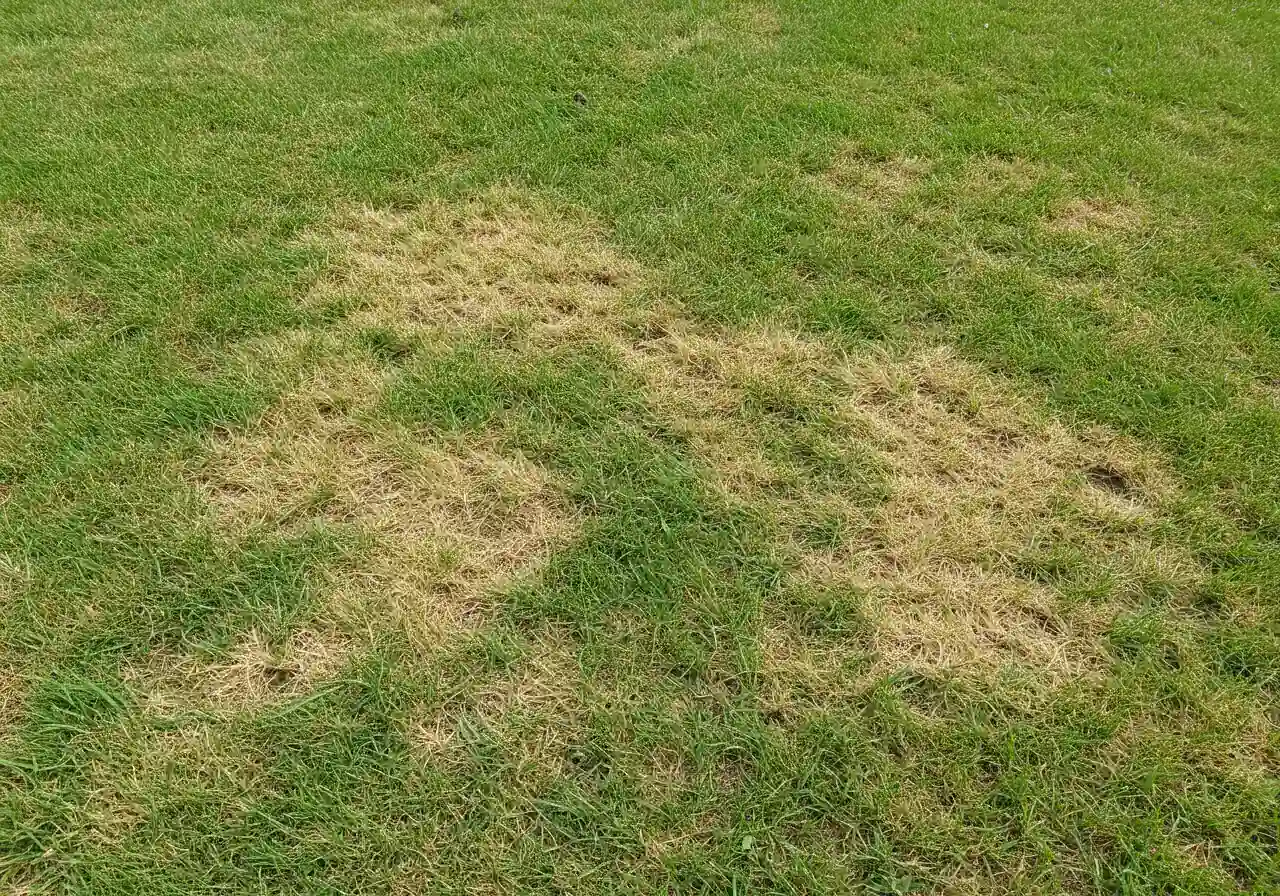
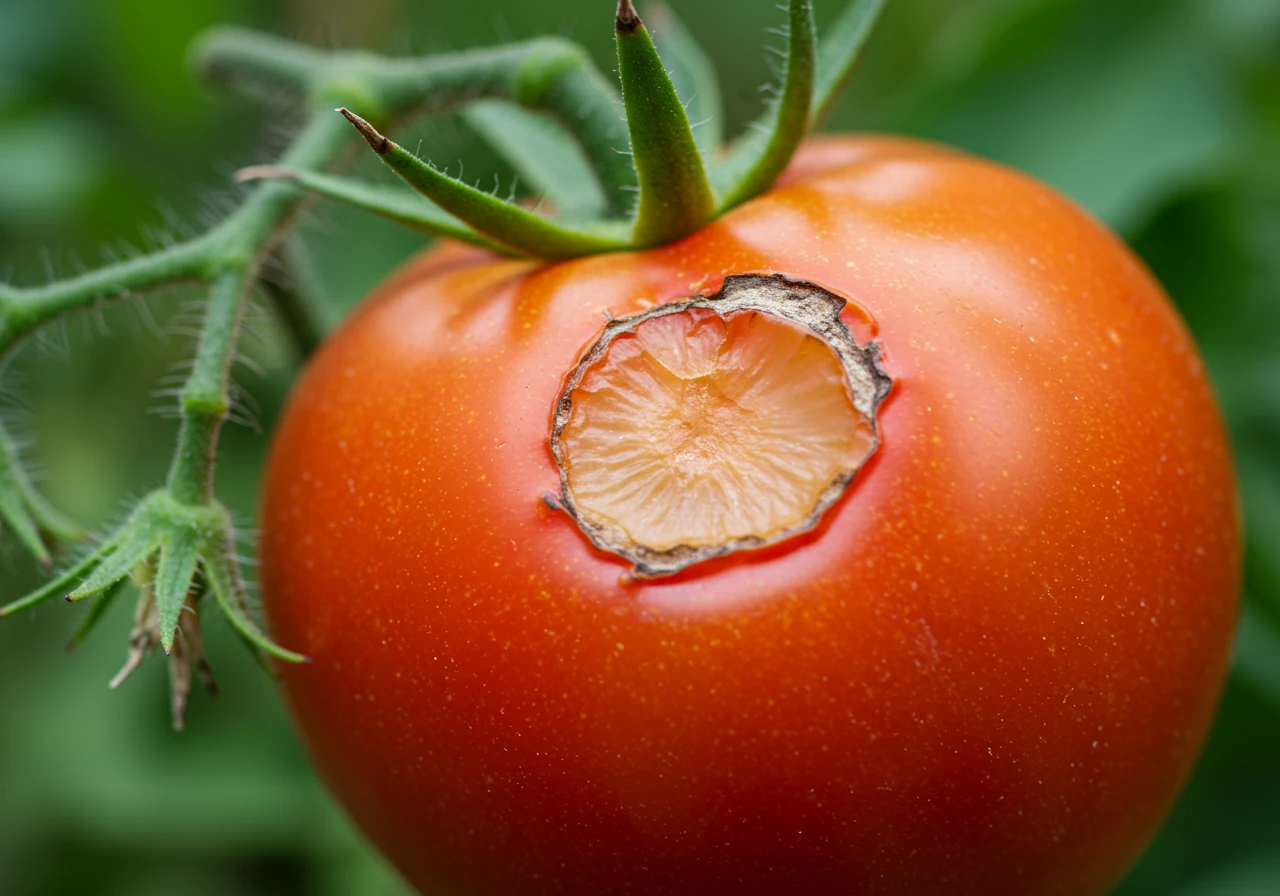
So, what kind of summer hangover might your garden be nursing?
- The Sunburn Scenario: Remember those days when the sun felt like a laser beam? Plants felt it too! You might see scorched or brown edges on leaves, especially on sensitive plants like hydrangeas or hostas that prefer a bit more shade. Fruits like tomatoes could have developed pale, tough patches called sun scald. Even tough plants can get stressed when the heat is relentless, sometimes leading them to drop leaves or flowers prematurely. Recognizing these patterns is key, similar to .
- Thirsty or Drowning?: Watering can be a tricky balancing act. Long dry spells mean plants wilt, leaves turn yellow or brown starting from the bottom, and lawns become crispy. On the flip side, sudden heavy thunderstorms, common around here, can overwhelm poorly draining soil. If you’ve got that classic Ottawa Valley clay, you know the struggle! Waterlogged roots can lead to root rot, which looks surprisingly similar to drought stress (wilting, yellowing leaves). Getting drainage right is crucial, especially if you’re dealing with improving drainage in heavy clay soil like you might find near Vernon.
- Lawn Woes: Your lawn probably took a hit. Compacted soil from summer foot traffic, heat stress, and maybe inconsistent watering often leads to those dreaded brown patches, thinning grass, or even bare spots. Sometimes weeds take advantage of the weakened turf and move right in. Tackling these issues often involves understanding the specific conditions, much like .
- Uninvited Guests (Pests & Diseases): Just like us, stressed plants have weaker immune systems. Heat and humidity can create ideal conditions for certain fungal diseases (hello, powdery mildew!) or attract pests like spider mites or aphids, who seem to *love* munching on stressed-out greenery.
Identifying the specific *type* of damage is the first step towards recovery. Was it mostly heat? Lack of water? Maybe poor soil conditions? Knowing the cause helps you choose the right remedy as we move into autumn, applying to heal the damage and prepare for next year. If the damage feels overwhelming, remember there’s help available; you can always explore our comprehensive landscaping services for professional assessment and repair.
Step-by-Step Garden Assessment: Your Post-Summer Check-Up
Okay, garden warriors, summer might be winding down, but our work isn’t quite done! Before we swap iced tea for pumpkin spice lattes, let’s put on our detective hats (or gardening gloves, whichever fits better) and give our yards a proper post-summer check-up. This assessment is key to planning your fall *gardening* and *landscaping* tasks.
Here’s your step-by-step guide to figuring out what your garden needs:
Step 1: The Grand Tour (aka The Walkabout)
Grab a notebook (or your phone) and take a slow stroll around your entire yard. Don’t zero in on details just yet. Look at the overall picture. Are there any glaringly obvious issues? Maybe a shrub that looks like it gave up halfway through August? A suspicious bare patch on the *lawn* the size of a small dog? Any leaning fence posts or wonky pathway stones? Get a feel for the general state of things, from your Manotick flower beds to your Metcalfe patio border. Make a quick note of the big stuff. Check out our gallery for inspiration.
Step 2: Lawn & Order
Now, focus on the grassy bits. Kneel and get a closer look.
- Color: Note any large brown or yellow areas. Is it uniformly sad, or patchy?
- Thickness: Can you see soil through the grass easily? Thinning *turf* is common after summer stress.
- Weeds: Who invited these guys? Note the types and quantity of weeds that snuck in. Crabgrass having a party?
- Feel: Does the ground feel rock hard? Poke it gently with a trowel. Compacted soil struggles to absorb water and nutrients.
Step 3: Plant CSI (Critter & Sickness Investigation)
Time to inspect your *plants* – perennials, shrubs, even trees.
- Leaves: Look for yellowing, brown spots, crispy edges, holes, or weird powdery stuff (hello, powdery mildew!). Check *under* the leaves too; pests love hiding there.
- Stems & Branches: Are there any broken, dead, or diseased-looking branches? Give shrubs a gentle shake – are they securely rooted?
- Blooms (or lack thereof): Did things stop flowering early? Are the remaining blooms looking puny?
Step 4: Get Your Hands Dirty (Soil Check)
Carefully dig down a few inches in a couple of different spots (near stressed plants and healthy ones, if possible). Is the *soil* powder-dry? Soaking wet? Nice and slightly damp (the dream!)? Does it look rich and dark, or is it mostly clay or sand? Soil health is the foundation of garden recovery. Learn more about soil preparation techniques.
Step 5: Make Your List (and Check it Twice)
Review your notes. What needs immediate attention (like a desperately thirsty plant)? What can wait for your main fall *cleanup*? This list will guide your next steps, whether it’s planning some DIY fixes or realizing you might need professional help. If the damage is extensive or you’re dreaming bigger for next year, you might want to explore potential garden transformations or look into professional landscaping and cleanup services. For neighbours needing specific help, dedicated options like a Metcalfe yard cleanup service or similar tailored assistance like the Greely yard cleanup service can tackle local challenges head-on. Just be sure to review the service terms and conditions when booking any professional work. You can also ask questions through our contact page.
This check-up isn’t about judging your summer *gardening* skills; it’s about understanding what your Ottawa garden needs to bounce back stronger for the fall and thrive next spring! Happy assessing!
Common Summer Stress Factors (%)
*Illustrative data showing common issues gardens face after summer.
Revival Recipe Part 1: Smart Watering & Feeding
Okay, garden gurus, you’ve played detective and figured out what summer shenanigans left your yard feeling a bit sorry for itself. Now, let’s roll up our sleeves for the first part of the recovery plan: giving your *plants* and *lawn* the five-star treatment when it comes to drinks and dinner. After a potentially scorching Ottawa summer, getting the *watering* and *feeding* right is like sending your garden to a spa – essential for bouncing back before winter rolls in.
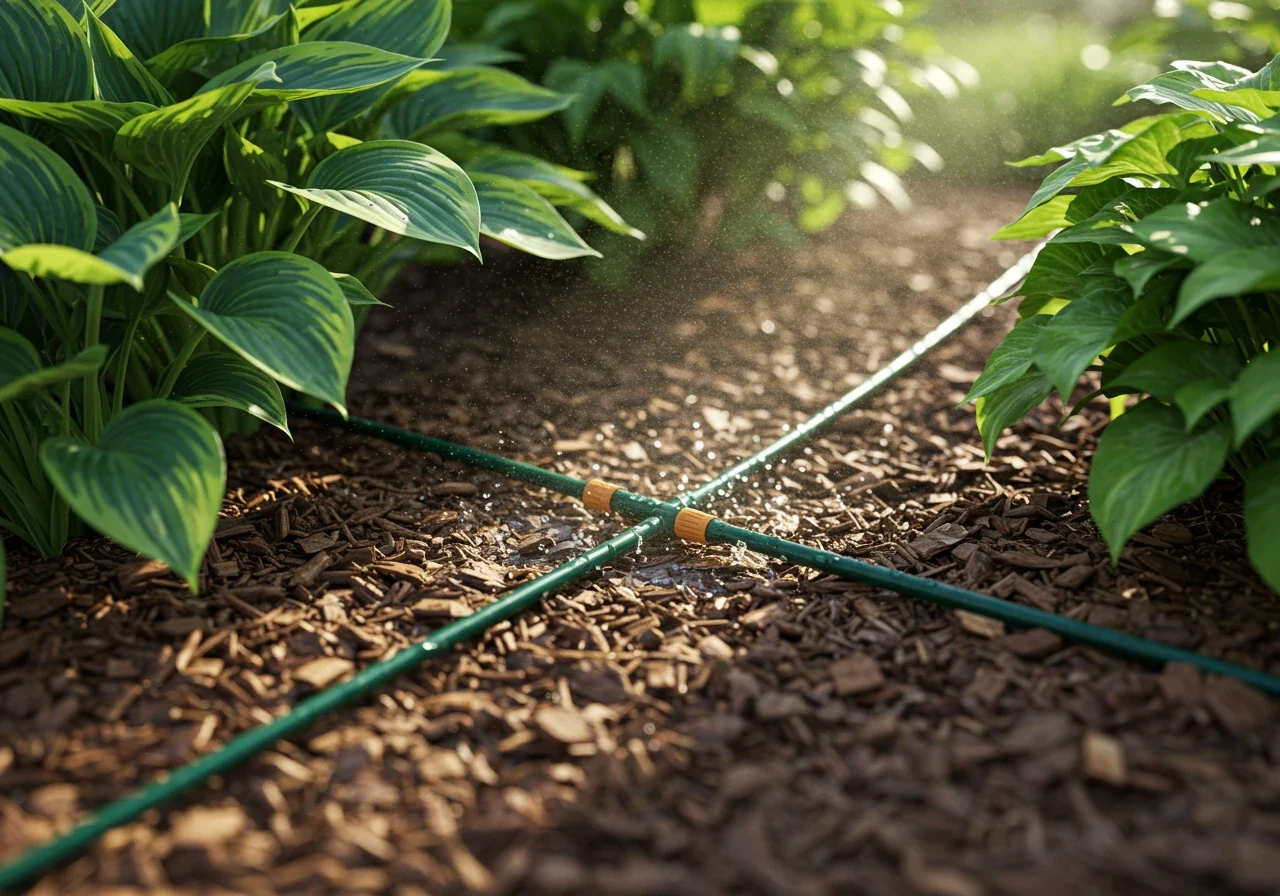
Think of this as the comfort food and hydration therapy stage for your stressed-out greenery. Getting this right sets the stage for a strong comeback next spring, whether you’re in Barrhaven, Osgoode, or anywhere else feeling the post-summer fatigue.
Smart Watering: Drink Deeply, Friend!
Just because the air is cooling doesn’t mean your plants’ roots have clocked out! They’re still working hard underground, preparing for the cold months. The key now is *deep, infrequent watering*.
- Why Deep? Watering thoroughly encourages roots to reach deeper into the *soil*. Shallow, frequent sprinkles keep roots near the surface, making them vulnerable to drying out and frost heave. Deeper roots mean tougher *plants*! This is especially crucial if you’re planning any late-season planting or patching; good ground moisture is vital for things like successful new sod installation.
- When & How: Aim to water early in the morning. Less water evaporates in the cool morning air, and leaves have all day to dry, reducing the risk of fungal diseases taking hold overnight. Consider local water conservation guidelines.
- Be Water-Wise: Forget the sprinkler spraying the sidewalk! Use soaker hoses or drip irrigation around *plants* and shrubs. This targets the roots directly, uses less water (your wallet and the planet say thanks!), and keeps foliage dry.
- The Finger Test: Before you turn on the hose, stick your finger about two inches into the *soil* near your *plants*. If it feels dry at that depth, it’s time to water. If it’s still damp, hold off. Simple, effective *gardening* wisdom!
Smart Feeding: The Right Kind of Nourishment
Your *plants* are hungry after working hard all summer, but now isn’t the time for a sugary energy drink – they need a balanced, strength-building meal. We want to focus on root health and energy storage, not necessarily lush top growth that frost could damage.
- Compost Power: Your absolute best friend in the fall *landscaping* game is *organic matter*. Spreading a layer of compost or well-rotted manure around your *plants* (keep it away from direct contact with stems) feeds the *soil*, improves its structure (especially important in clay or sandy soils common around Ottawa), and provides a slow, steady release of *nutrients*. Incorporating compost is often a key step after a thorough fall clean-up, something covered by professional services like the general Ottawa garden clean-up service or more area-specific options such as the Marionville garden clean-up service.
- Targeted Fertilizers: For your *lawn*, now is the time for a ‘fall’ or ‘winterizer’ *fertilizer*. These are specially formulated to be lower in nitrogen (which encourages leafy growth) and higher in potassium and phosphorus, supporting root development and disease resistance over winter. This precise nutrient balance is a cornerstone of effective year-round lawn care.
- Fertilizer Homework: There are different types of *fertilizers* out there – granular, liquid, organic, synthetic, slow-release, fast-acting. It might be helpful to jot down a quick comparison of their pros and cons to see what fits your needs and *gardening* style best. (See Fertilizer Comparison Tab below).
- Hold the Nitrogen (Mostly): Avoid applying high-nitrogen *fertilizers* to most perennials, shrubs, and trees late in the season. This can spur vulnerable new growth that won’t survive the first hard frost. Focus on root health! Proper material selection is key here.
Remember, if you’re bringing in professionals for *gardening* help or *landscaping* projects, it’s always a good idea to understand the scope of work and specifics, often detailed in the company’s service terms and conditions. Our About Us page shares our company values.
By giving your garden this smart combination of water and food now, you’re setting it up not just to survive the winter, but to thrive beautifully next spring!
Fall Fertilizer Focus
Choosing the right fertilizer in fall is crucial for winter hardiness.
| Type | Pros | Cons | Best For (Fall) |
|---|---|---|---|
| Granular Slow-Release | Feeds gradually over time, less risk of burning | Needs water to activate, slower results | Lawns (‘Winterizer’ blend), established beds |
| Liquid / Water-Soluble | Quick nutrient uptake, easy application | Needs frequent application, higher risk of leaching/runoff | Quick boost for stressed plants (use balanced formula) |
| Organic (Compost, Manure) | Improves soil structure, feeds soil life, slow/gentle release | Bulkier, nutrient content varies, slower acting | Overall soil health, amending beds |
| High Nitrogen | Promotes lush green growth | Can stimulate weak growth vulnerable to frost | AVOID for most plants in late fall |
Top Fall Watering Tips
- Check Soil First: Always test moisture 2 inches deep before watering.
- Water Deeply: Encourage deep root growth for winter survival.
- Morning is Best: Reduces evaporation and allows foliage to dry, preventing disease.
- Target the Roots: Use soaker hoses or water at the base, not overhead sprinklers.
- Don’t Forget Evergreens: They lose water in winter; water until ground freezes.
- Adjust for Rain: Reduce watering frequency after significant rainfall.
Why Compost is Your Fall Friend
Adding compost in the fall is one of the best investments for your garden:
- Improves Soil Structure: Helps clay soils drain better and sandy soils retain moisture.
- Adds Nutrients Slowly: Provides a gentle, long-lasting food source without forcing weak growth.
- Feeds Soil Microbes: Creates a healthier soil ecosystem, benefiting plant roots.
- Increases Water Retention: Helps soil hold moisture, reducing drought stress.
- Buffers Soil pH: Helps maintain a neutral pH level suitable for most plants.
- Reduces Erosion: Helps bind soil particles together.
Consider adding a layer after your fall property clean up.
Revival Recipe Part 2: Pruning, Weeding & Pest Patrol Power-Up
Alright, team green-thumb! We’ve covered giving your garden a much-needed drink and a balanced meal in Part 1. Now, let’s tackle the next stage of our garden revival: the big tidy-up! Think of this as a spa day meets boot camp – we’re getting rid of the dead weight, clearing out the riff-raff, and keeping an eye out for trouble makers. This is where pruning, weeding, and pest patrol come in to power-up your *landscape* for fall.
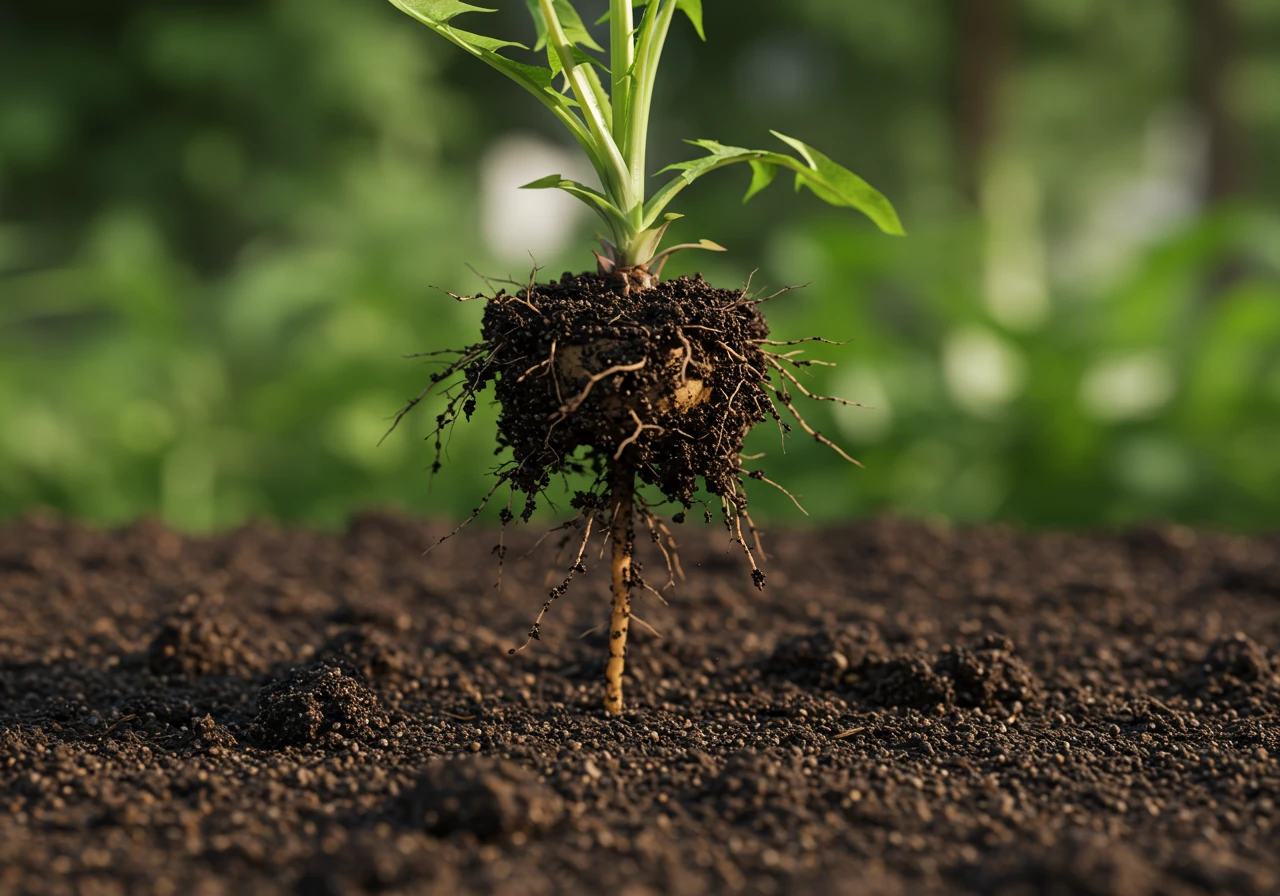
This part is all about cleaning house – literally, in your garden beds! Getting these tasks done now, before the real Ottawa chill sets in, makes a huge difference for plant health and saves you headaches next spring.
Pruning Power-Up: A Little Snip Here, A Little Shape There
Hold your horses – late summer isn’t the time for major surgery on most *shrubs* and trees (wait until dormancy for that!). But a little strategic *pruning* now works wonders.
- Why Prune Now? We’re mainly focused on removing the “3 D’s”: Dead, Damaged, and Diseased branches. Cutting these out prevents problems from spreading and tidies things up. It also improves air circulation, which helps ward off fungal issues like powdery mildew. You can also lightly shape summer-flowering shrubs that have finished blooming or cut back floppy *perennials*.
- Simple Pruning Steps:
- Gear Up: Grab clean, sharp bypass pruners (the kind that cut like scissors). Clean tools prevent spreading disease!
- Scan & Snip: Look for those 3 D’s – brown, broken, or spotted branches. Cut them back to healthy wood or near the base.
- Tidy Perennials: Cut back *perennials* that are looking ragged or collapsing (like hostas or daylilies after blooming) to about 4-6 inches above the *soil*. Some gardeners leave seed heads for birds, which is great too!
- Cut Clean: Make cuts just above an outward-facing bud or branch junction, angling the cut slightly so water runs off.
- What NOT to Prune: Avoid heavily pruning spring bloomers like lilacs or forsythia now – you’ll cut off next year’s flowers! Big tree pruning is usually best left to professionals, especially if it involves climbing or large branches. If you’ve got significant pruning debris or need help tidying up after, consider options like a comprehensive Ottawa garden clean-up service to handle the removal.
Weeding Warriors: Evict Unwanted Tenants!
Ah, weeds. They never seem to take a vacation, do they? Getting them out *now* is crucial.
- Why Fall Weeding Rocks: Every weed you pull now is one less competitor stealing water and *nutrients* from your desirable *plants*. More importantly, you stop them from going to seed and unleashing thousands of future weed headaches! It makes spring *gardening* so much nicer.
- Smart Weeding Tactics: Try to weed after a rain shower; the damp *soil* makes it easier to pull the entire root system. Use a trowel or weeding tool for deep-rooted invaders. Afterwards, applying a layer of *mulch* helps suppress new weeds. Some areas, perhaps like around Metcalfe, might battle persistent weeds; tackling these thoroughly might require a more intensive effort, potentially involving a dedicated Metcalf property cleanup service for larger areas. Similarly, homeowners in Marionville dealing with extensive weed issues can explore options like a Marionville yard cleanup service to get things under control.
Pest Patrol & Disease Defense: Stay Vigilant!
Stressed *plants* can be magnets for *pests* and *diseases*. Let’s use smart, eco-friendly tactics – known as Integrated Pest Management (IPM).
- IPM Basics: This means monitoring regularly and using the least harmful methods first. Before reaching for chemicals, try these:
- Clean Up Crew: Remove fallen leaves and diseased plant parts promptly. This gets rid of overwintering spots for *pests* and fungal spores. A thorough property clean up is essential IPM.
- Boost Good Bugs: Encourage beneficial insects like ladybugs (aphid munchers!) by avoiding broad-spectrum pesticides. Consult local resources like the Master Gardeners of Ottawa-Carleton for tips.
- Hand-to-Hand Combat: Pluck off slugs, snails, or large caterpillars when you see them (early morning or evening is prime time). Drop them in soapy water.
- Spot Treatment: If needed, use insecticidal soap or horticultural oil for specific infestations like aphids or spider mites, following directions carefully. Target only the affected areas.
- Air it Out: Remember that *pruning* we talked about? Good air circulation is key to preventing fungal *diseases*.
- If you’re dealing with significant amounts of infected plant material that needs careful removal and disposal, especially across a larger property in areas like Marionville, a professional Marionville property cleanup service can ensure it’s handled correctly to prevent further spread.
By tackling these pruning, weeding, and pest patrol tasks, you’re not just tidying up; you’re actively strengthening your garden’s health and resilience for the upcoming winter and setting the stage for a fantastic show next spring! Need a complete garden overhaul? Explore our garden installation services.
Looking Ahead: Prepping Your Recovered Garden for Fall & Winter
Alright, give yourself a pat on the back! You’ve nursed your garden through its post-summer recovery, and things are hopefully looking much happier. But don’t hang up your *gardening* gloves just yet! As the vibrant colours of fall arrive across Ottawa, it’s time to shift gears and prepare your revitalized outdoor space for the inevitable deep freeze. Think of it as tucking your *plants* into bed for their long winter nap – a crucial step in our tough *Zone 5* climate.
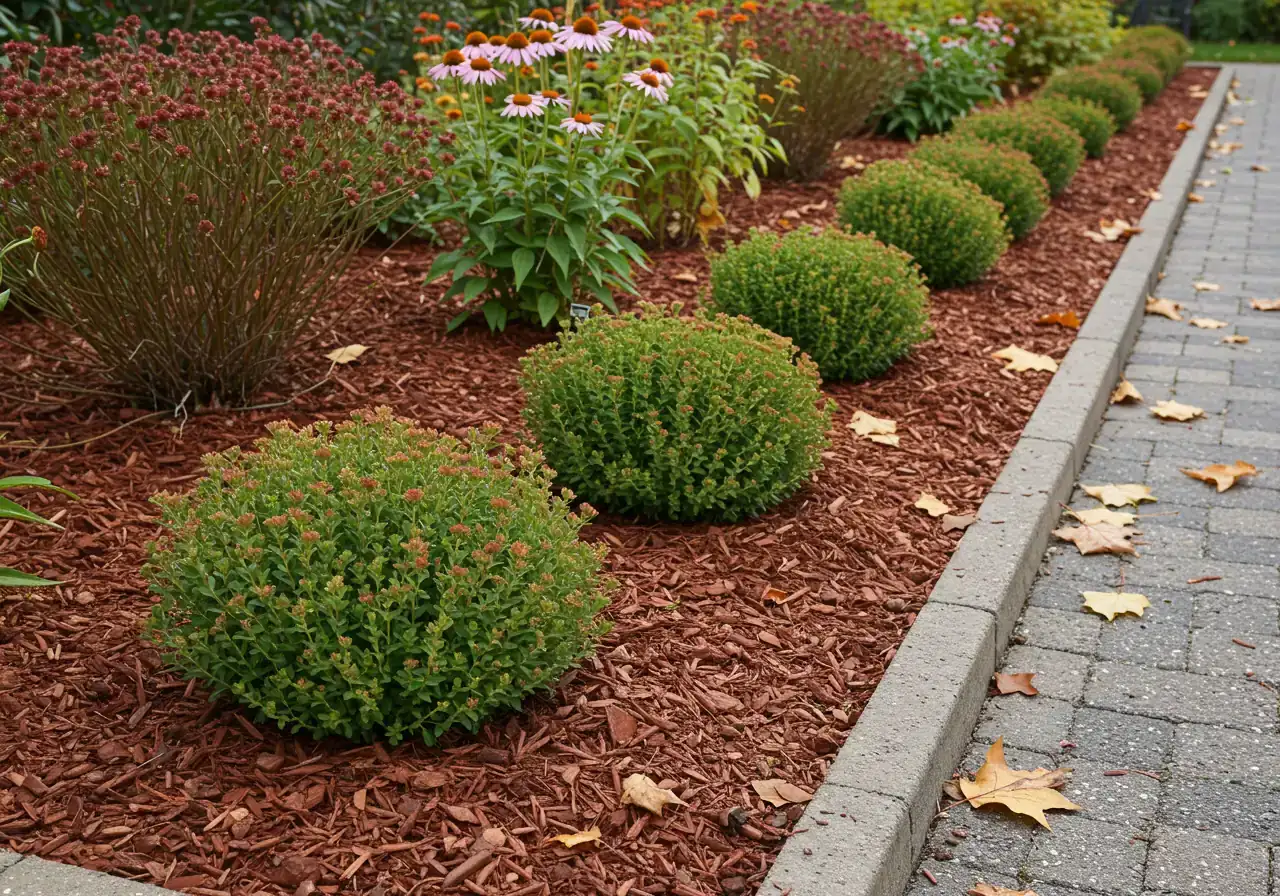
Getting your garden winter-ready isn’t just about tidiness; it’s about protection and setting the stage for a glorious spring comeback. Here’s what you should focus on:
- The Final Sweep: This is your last big *cleanup*. Rake up fallen leaves, especially from the *lawn*, to prevent diseases like snow mold and stop soggy mats from suffocating the grass. Remove any remaining annuals blackened by frost and cut back spent *perennials* (leaving some seed heads for birds is okay!). Clear out lingering garden debris – old plant supports, stray pots – basically anything you don’t want buried under snow. If the leaf volume is overwhelming or you need a hand with the heavy lifting, a professional Ottawa yard cleanup service can make short work of it.
- Mulch Magic: Once the ground starts to cool but before it freezes solid, apply a fresh layer of *mulch* (like shredded bark or straw) around the base of *perennials*, *shrubs*, and trees. This acts like a cozy blanket for the *soil*, insulating roots from harsh freeze-thaw cycles, conserving moisture, and even suppressing early spring weeds. Aim for about 2-4 inches, keeping it away from direct contact with stems and trunks. Our mulching and edging services ensure a professional finish.
- Protect the Tender Ones: Some *plants* need extra TLC to survive an Ottawa winter. Delicate roses might need mounding with *soil* or compost, and broadleaf evergreens or sensitive *shrubs* (especially young ones or those in windy spots, like you might find in newer developments) benefit from burlap wraps or screens to prevent windburn and sun scald.
- Tool Time: Don’t forget your trusty tools! Clean shovels, trowels, and pruners thoroughly, sharpen blades if needed, and store them somewhere dry to prevent rust. A little maintenance now saves you money and hassle later.
- Last Call for Water: Keep watering evergreen trees and *shrubs* until the ground freezes solid. They continue to lose moisture through their needles/leaves during winter, so a good final drink helps prevent dehydration.
Your Quick Fall Prep Checklist Idea:
Early Fall (Late Sept/Oct)
Focus on *cleanup*, lawn care (last mow, maybe aeration), planting spring bulbs.
Mid-Fall (Late Oct/Early Nov)
Apply *mulch*, continue watering evergreens, protect sensitive *plants*.
Late Fall (Before heavy snow)
Finish protecting *plants*, clean and store tools, drain hoses & irrigation systems.
Feeling a bit overwhelmed by the list? Sometimes bringing in experts ensures everything gets done right before the snow flies. For instance, a thorough prep might involve services like the Metcalf garden clean up service for residents there, or ensuring comprehensive winterization with a Marionville property cleanup service if you need that extra level of detail across a larger space. Need some visual motivation? Check out examples of beautifully prepped yards in our gallery! Or view our successful transformations.
Taking these steps helps ensure your *landscape* investment is protected. And when you engage services, rest assured your information is handled appropriately; you can always review our approach in our privacy policy. A little prep now means less work and more joy when spring finally bursts forth! A thank you is always appreciated after a job well done.
Expert Tip Box: Quick Wins for Garden Recovery
Feeling a bit overwhelmed by the post-summer garden rescue mission? Don’t worry, sometimes a few targeted actions can make a world of difference without requiring a whole weekend overhaul. Here are some quick wins to get your Ottawa *landscape* looking happier, faster:
- Hydration Heroics: Check your *soil* moisture first! Before doing anything else, stick your finger a couple of inches down near key *plants*. If it’s bone dry, give them a *long, slow drink* right at the base. Forget the quick sprinkle; aim for deep hydration. This one simple step can perk things up dramatically. If you’re consistently battling dry spots or aren’t sure about the best watering strategy for your specific *plants*, don’t hesitate to reach out with your gardening questions – we’re happy to help troubleshoot!
- Speedy Tidy-Up: Snip off any obviously dead or totally spent flower heads and pull out the most glaring weeds that sprouted during the summer chaos. Removing the dead stuff instantly makes *plants* look better and prevents potential disease spread. Taking out those big, ugly weeds (roots and all, if possible!) reduces competition for your recovering greenery. Existing clients needing a hand with a more thorough cleanup can often schedule services easily through the handy customer portal. Even a 15-minute tidy session can improve curb appeal in neighbourhoods from Barrhaven to the rural outskirts like Ottawa Property Cleanup Service covers.
- Lawn Patch Magic: Got some sad, bare patches on the *lawn*? Quick fix: vigorously rake the bare spot to loosen the *soil* surface. Mix some grass seed suitable for our Ottawa climate with a bit of topsoil or compost and sprinkle it evenly over the patch. Water gently and keep it consistently moist until the new grass sprouts. It’s a small effort for a much greener view later.
- Mulch/Compost Quick Dress: You don’t need to mulch the entire garden right away, but adding even a small layer of compost or *mulch* around the base of your most stressed *plants* (shrubs, perennials) gives them an immediate boost. It helps retain moisture, keeps *soil* temperature even, and adds a slow trickle of *nutrients*. Thinking about getting a professional quote for larger *soil* amendment or mulching jobs? We value your input on our service estimates, so please feel free to use our estimate feedback form to share your thoughts on any quotes you receive.
- Plan, Don’t Panic: Sometimes the best quick win is simply taking stock and making a realistic plan. If major work is needed, prioritize what *must* be done now versus what can wait. Knowing you have a plan, even if it involves booking professional help later, can be surprisingly stress-relieving. When you do contact professionals for *landscaping* assistance, rest assured reputable companies value your personal information; you can learn about our commitment by reading our website privacy policy.
Embrun & Ottawa Garden Recovery FAQs
Late summer into early fall – think September and early October – is your golden window here in the Ottawa region! The worst of the heat is usually behind us, but the ground isn’t frozen solid yet. This gives your *plants* a chance to recover before winter arrives. Start with essential *watering*, weeding out invaders, and assessing the damage. Major *pruning* often waits, but cleaning up dead bits now is always helpful!
Absolutely, there’s still hope for those brown patches! First, vigorously rake out the dead grass to expose the *soil*. Lightly loosen the surface, then overseed with a quality grass seed blend suitable for our Ottawa climate. Water gently but consistently until the new grass sprouts. For larger areas or compacted *soil*, fall aeration can also work wonders for your lawn care efforts.
Not necessarily everything! It’s wise to trim back *plants* that are truly flopping over, looking diseased, or completely spent. However, leaving some sturdy stems and seed heads (like on Coneflowers or Sedum) adds winter interest and provides food for birds! Think selective tidying rather than a total chop. Proper cleanup is part of smart ongoing garden maintenance strategies that set you up for an easier spring.
Ah, that infamous Ottawa Valley clay! Don’t despair. The absolute best thing you can do is add *organic matter*, like compost or well-rotted manure. Gently work it into the top few inches. Fall is an excellent time for this kind of foundational soil preparation for healthier plants, as it improves drainage and structure over the winter, making roots happier next spring.
Once you’ve addressed water needs, applying a good layer of *mulch* is probably your best bet! After a light cleanup, spread a few inches of shredded bark, straw, or chopped leaves around the base of *perennials*, *shrubs*, and trees (keeping it off the stems). Quality protective mulching and clean edging insulates roots from freeze-thaw cycles and helps retain moisture.
Take a deep breath! It happens. If the damage is extensive, involves tricky *pruning*, significant *soil* work, or just feels like too much, calling in professionals is a smart move. Getting expert advice and help ensures the recovery is done right. You can easily book an estimate for garden recovery services to discuss your specific needs and get your garden back on track.
Conclusion: Turn Summer Stress into Autumn Success!
Phew! We’ve journeyed through the post-summer garden battlefield, from decoding that crispy *lawn* look to strategizing a comeback. Remember, even if your Embrun or Barrhaven backyard took a beating from the summer heat and unpredictable rain, it’s definitely not game over for your *plants*! Your garden might look tired now, but think of it as being ready for a well-deserved spa treatment.
You now have the know-how to assess the situation and start the healing process. Getting the *watering* and *feeding* right provides the perfect nourishment, while careful *pruning*, determined *weeding*, and keeping an eye out for *pests* tackle the immediate clean-up. And don’t underestimate the power of that final fall *cleanup* and a cozy *mulch* blanket – these steps are vital for protecting your *soil* and roots through our chilly Ottawa winters.
Turning that summer stress into autumn success is absolutely within reach. By giving your *garden* this focused attention now, you’re setting the stage for a healthier, more resilient *landscape* next spring. It’s all about giving your green space the best chance to bounce back beautifully.
Feeling inspired but maybe still a tad overwhelmed or short on time? If tackling the full *lawn* recovery, extensive *cleanup*, or bigger *landscaping* tasks feels like too much, we’re here to lend a hand! Clean Yards provides expert *gardening* and *lawn care* services throughout Ottawa and surrounding areas like Manotick, Greely, and . Let us handle the hard work so you can enjoy a beautiful, thriving yard.
Ready to transform your yard?
Book Your Free Estimate Today!Or, if you just have a few quick questions about your specific garden woes, feel free to reach out and contact us – we’re always happy to chat about *gardening*!

